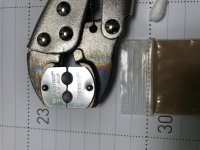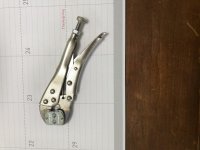Best solution I've found so far
I had the same problem some years ago with Model 34-1 and with Model 17-3. Usually after a plinking day with multiple family shooters, both DA and SA. Got real tired of having to clear and attempt tightening at the range.
Found a specialized tool made specifically for J, K and N Frame S&W extractor rods. Very neat, fits perfectly, and following directions to just "tighten with the Visesmith until it feels "snug". Do not overtighten."
I only had Loctite 271 Red (DO NOT USE THIS !!!) and a small bottle of Stalok 500 Yellow (Medium strength) thread locker on hand in the shop so I did use a "wee drop" of the Stalok and have had no more issues, even with 5 or 6 boxes (300 rounds) and the accompanying dirt from 22LR ignition.
PS: I did have occasion to need to finish ream the cylinder for "tight" chamber issues, and the Stalok released without any problems, no heat or excessive force required.
I can't recall where I got this tool but it had to have been either Midway or Brownells several years ago.
Worked for me.





